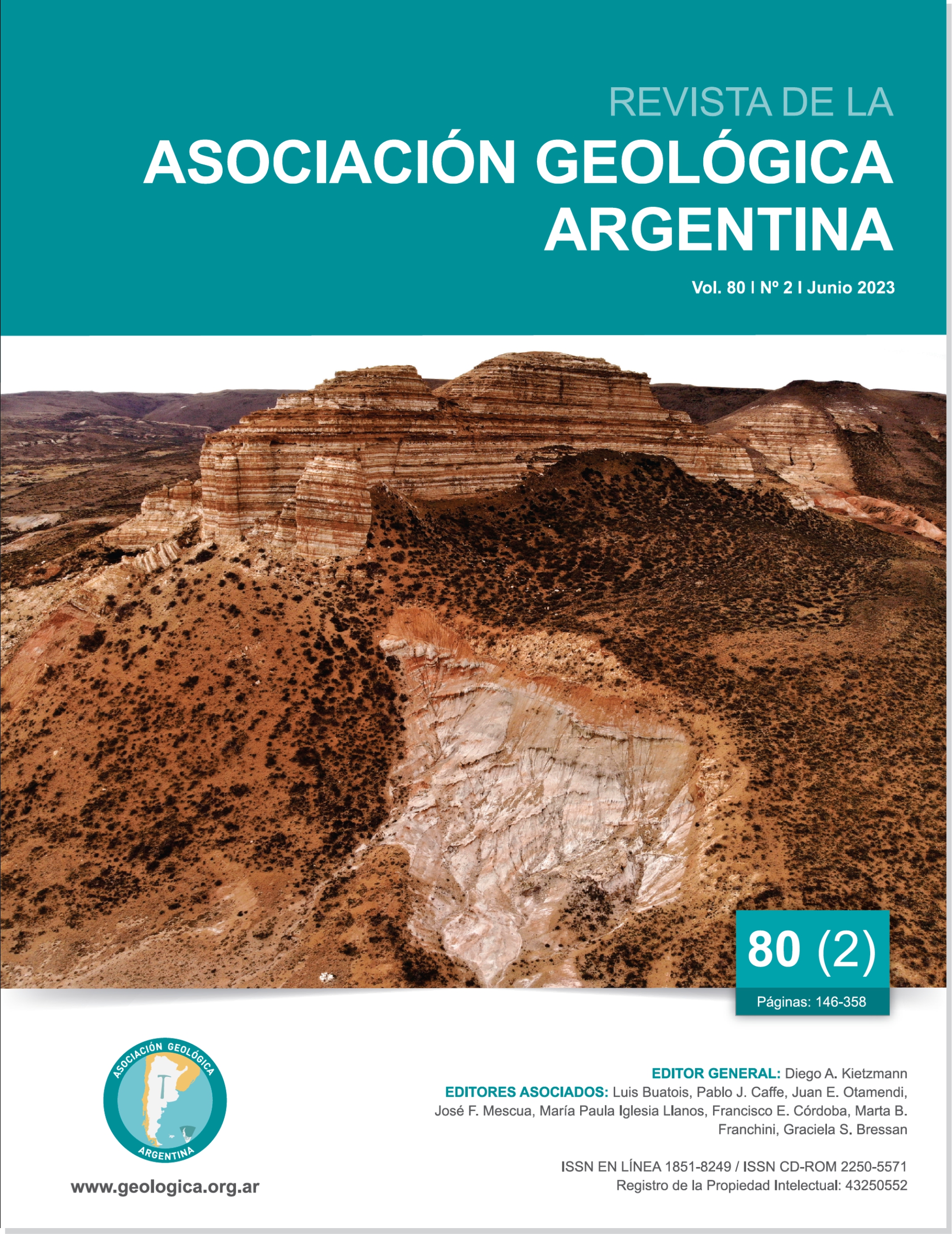Backward movement of the Paraná river cliffs, in Diamante, Entre Ríos Province, Argentina
Main Article Content
Abstract
River cliffs are perhaps the most outstanding geomorphological feature of the Paraná river. Nevertheless, these are a real hazard to people living on the cliffs. In many cases, cliffs are related to fluvial erosion when it removes material from the slope foot. But in Diamante coast, there is a gentle and undulating plain 200 to 300 m, in between the river channel and the cliffs. The presence of this plain refuses the idea of direct river action generating steep slopes. Therefore, it is reasonable to think that other mechanisms can achieve block falls and backward movement of the cliffs. The last landslide in October 2018, which caused the fall and slide of a huge block, renewed the interest to understand the causes that promote it. New data supplied from geotechnical boreholes, geological outcrops, geomorphometric processing from DEM, hydrometric level measurements, and GPS, allow us to propose new ideas about the mechanisms of landslides that induce backward movements of the river cliffs. Both landslides and episodes of fall of the river level within a long-term wet period in steady ascent, allow us to think that there exists a correlation with the October 2018 landslide event. Thus, it is to be expected that the climate change over the last decades may accelerate rates of falls and backward movements of the cliffs and increase the hazard to people living there.
Article Details

This work is licensed under a Creative Commons Attribution-NonCommercial 4.0 International License.
Nota de copyright
Los autores conservan los derechos de autor y garantizan a la revista el derecho de ser la primera publicación del trabajo licenciado según una licencia de atribución Creative Commons que permite a otros compartir el trabajo con el reconocimiento de la autoría y de la publicación en la que se publicó por primera vez.
Declaración de privacidad
Los nombres y direcciones de correo electrónico introducidos en esta revista se usarán exclusivamente para los fines declarados por esta revista y no estarán disponibles para ningún otro propósito u otra persona.

